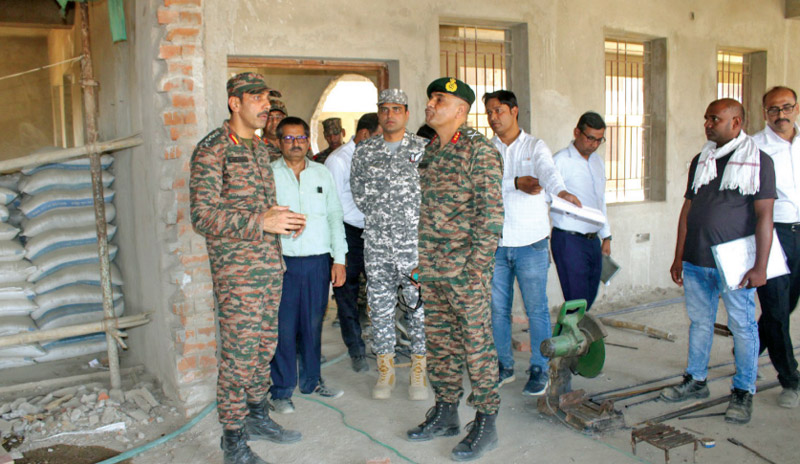Increasing the number of Sainik Schools in a PPP mode makes no sense
 Lt Gen. Z.U. Shah (retd)
Lt Gen. Z.U. Shah (retd)
The National Defence Academy and other training establishments, preparing youngsters for a commission in the armed forces, get their intake from a number of institutions like Rashtriya Indian Military College (RIMC), Rashtriya Military Schools (RMS), Sainik Schools (SS) and hundreds of other schools across the country after class XII. There is one RIMC, five RMS and 33 SS. On an average, the selection rate for students from the above three schools in the Service Selection Board (SSB) process is generally higher compared to students from other schools because these institutions are specifically designed to prepare students for entry into the armed forces academies.
The percentage of newly commissioned officers who are alumni of Sainik Schools, can vary from year to year, with the average intake of 20-30 per cent of cadets. While Sainik Schools provide a solid foundation for students interested in pursuing a career in the military, the exact percentage of officers who graduate from these institutions depends on factors such as the number of vacancies available in the armed forces, the selection criteria and the performance of candidates in the selection process.
The Sainik Schools get an annual fee support of 50 per cent of the fee, subject to an upper limit of INR 40,000 per annum for 50 per cent of the class strength (subject to an upper limit of 50 students), per year from class 6 onwards until class 12. A school that has until class 12 is provided support of maximum INR 1.2 crores per annum. This is given as partial financial support to the students. Other incentives offered to the schools include an amount of INR 10 lakhs as training grant given annually based on academic performance of the students in class 12. Despite this huge financial largesse, it has been the case that some students, having secured a subsidised education at government expense, deliberately don’t make an effort to get selected.

In 2021, the Union government opened doors for private players to run Sainik Schools in India. In the annual budget that year, the government announced plans to set up 100 new Sainik Schools across India. Any school having Sainik School Society (SSS) specified infrastructure—land, physical and IT infrastructure, financial resources, staff etc.—could, potentially. be approved as one of the new Sainik Schools. However, as per reports, most requirements of this qualifying criteria have been overlooked, and only the infrastructure criterion makes a school eligible for approval. This limitation enabled sub-standard schools, linked with narrow, blinkered ideologies, to apply.
The Sainik Schools have recently come into focus after defence minister Rajnath Singh announced the establishment of 23 new Sainik Schools, in public-private partnership mode, to meet the initiative of setting up of 100 new Sainik Schools in partnership with NGOs/private schools/state governments in a graded manner, for admissions to class 6 and class 9 for the academic year 2024-25, through a written exam called All-India Sainik Schools Entrance Examination (AISSEE).
While the government expects the new model to bolster the recruitment pool for the armed forces, the initiative that brings in political players and institutions with exclusive agendas into the military eco-system has raised concerns. Immediately after this announcement the Congress party president, Mallikarjun Kharge, took up cudgels against the proposal and wrote to the President of India, Droupadi Murmu, demanding a rollback of the Centre’s move to ‘privatise’ Sainik Schools, terming it a ‘blatant attempt to politicise them’. He asserted that an investigative report based on an RTI reply ‘has revealed that 62 per cent of the privatised Sainik Schools belong to leaders of the BJP and the party’s ideological mentor, the Rashtriya Swayamsevak Sangh’. In his two-page letter, Kharge also added, ‘Indian democracy has conventionally kept our armed forces away from any partisan politics. In the past successive Indian governments kept armed forces and its affiliate institutions away from shadows of varying political ideologies.’
The ministry of defence promptly refuted the allegation, stating in a press note that, ‘the system involved a strict selection process, the political or ideological affiliation or otherwise of the applicant’s institution does not influence the selection process. There should be no attempt to politicise or distort the objectives of increasing the number of Sainik Schools and casting aspersions on them, were unwarranted and misleading.’
These issues need to be examined, in detail, as the Sainik Schools are important feeder institutions for the officer cadre of the armed forces.
Historically, military academies and institutions have been established to provide education and training to future officers of armed forces. While the primary focus is typically on military tactics, leadership and professional development, there have been instances where ideologies or political beliefs were emphasised or even enforced to some extent. For example, during times of war or under authoritarian regimes, military education might include elements of political indoctrination to ensure loyalty to the ruling regime or to promote specific ideologies. However, in democratic nations with professional armed forces, such practices are generally undesirable, and efforts should be made to ensure that military education focuses on professional skills rather than political indoctrination.
Pre-commission education for future armed forces personnel, typically, involves a mix of academic study, physical training, leadership development and specialised skills training. This education prepares individuals for the challenges they will face as officers in the armed forces. It often includes courses in military history, strategy, tactics, ethics, law and the principles of leadership. Physical fitness training is also a significant component, as is handling weapons and other military equipment. Additionally, crises management and critical thinking are given due importance.
There are some valid lessons to be learnt from the earlier rush to establish new Indian Institutes of Technology (IITs) and Indian Institutes of Management IIMs) which led to some challenges and potential adverse impact. Overall, while the expansion of higher education through the establishment of new IITs and IIMs has increased access to quality education, it’s essential to address the following challenges to ensure that expansion efforts are sustainable and do not compromise the quality and effectiveness of these prestigious institutions.
You must be logged in to view this content.

